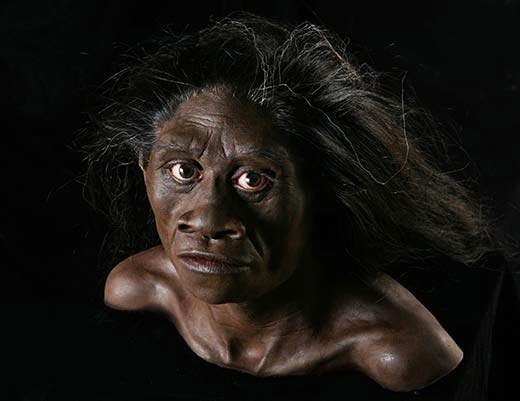Huge Scientific Discovery: ‘Hobbits’ Existed As A Separate Humanoid Species

I am sure many of our readers are fans of The Lord of the Rings and Tolkien, which means that you would have heard of the Hobbits, a race of dwarf humanoids playing a major role in the events of these books.
Well ‘Homo floresiensis’, otherwise called ‘Hobbit’, is considered to be a dwarf-like human species with a height of around 1 metre and small brains that co-existed with us until about 12,000 years ago, when they disappeared.
It may not be the same Hobbits as the ones of Tolkien, but they have many similarities.
There are three different theories as to the origins of that species. One theory suggests that it was a group of humans that had a disease that restricted their size, while another theory supports that Hobbits evolved from an ape like creature in Africa millions of years ago.
The third theory is that it was the result of dwarfism occurring in Homo Erectus species, which flourished mainly in Asia.
A new study based on the remains found on an Indonesian island, suggests that it is possible to be a separate species of the early human beings.
Dr Kaifu and his Japanese team support that their latest scans show that Hobbits cannot be a devolved Homo Erectus Species because their brain size is too small to just be a devolution of the Homo Erectus.
Therefore they must have been a separate human species. If such findings are true, then the question is how this human species appeared and what are its origins?
Of course Kaifu’s suggestion won’t be taken lightly in the scientific community, therefore creating more debates and adding Kaifu’s finding as the fourth hypothesis of the origins of Homo Floresiensis.
New Evidence Confirms the ‘Hobbit’ was an Ancient Human Species
In 2003, the remains of an early human species, Homo floresiensis, were discovered on the island of Flores in Indonesia and were dated to have lived between 95,000 and 17,000 years ago.
Nicknamed ‘hobbit’ for its small stature (approximately 3 feet 6 inches tall) and large feet, Homo floresiensis has been the subject of much debate and intense research to determine whether they represent a species distinct from modern humans, or whether the remains belonged to a modern human (Homo sapien) with a disorder such as microcephalia, a condition characterized by a small head, short stature and some mental retardation.
Now, a new 3D-comparative analysis has confirmed the status of Homo floresiensis as a distinct Homo species.
Scientists used 3D geometric analyses of skull surfaces to compare the ‘hobbit’ with many fossil humans, as well as a large sample of modern human crania suffering from microcephaly and other pathological conditions.
The study, published in the journal Plos One, is the most comprehensive study to date to simultaneously evaluate the two competing hypotheses about the status of Homo floresiensis.
The results revealed that the ‘hobbit’ cranium showed more similarities with fossil human samples than to modern humans with pathological conditions.
The differences between the H. floresiensis skull and the modern skulls with pathology were sufficient to be able to state with certainty that the ‘hobbit’ was not a modern human with pathology.
The study brings us a step closer in unravelling the mystery of the hobbit. But there is still much to be learned about this unique and mysterious species, such as:
-How did it get to the island of Flores?
-Did they have language or other forms of cultural expression?
-How did they manage to survive until relatively recent times when many other species became extinct?
-Did they co-exist or interbreed with modern humans?
-What was the eventual reason for their disappearance?
For now, the answers to all these questions are unknown but perhaps in time, we will learn the truth about our endearing ancestor, the hobbit.
